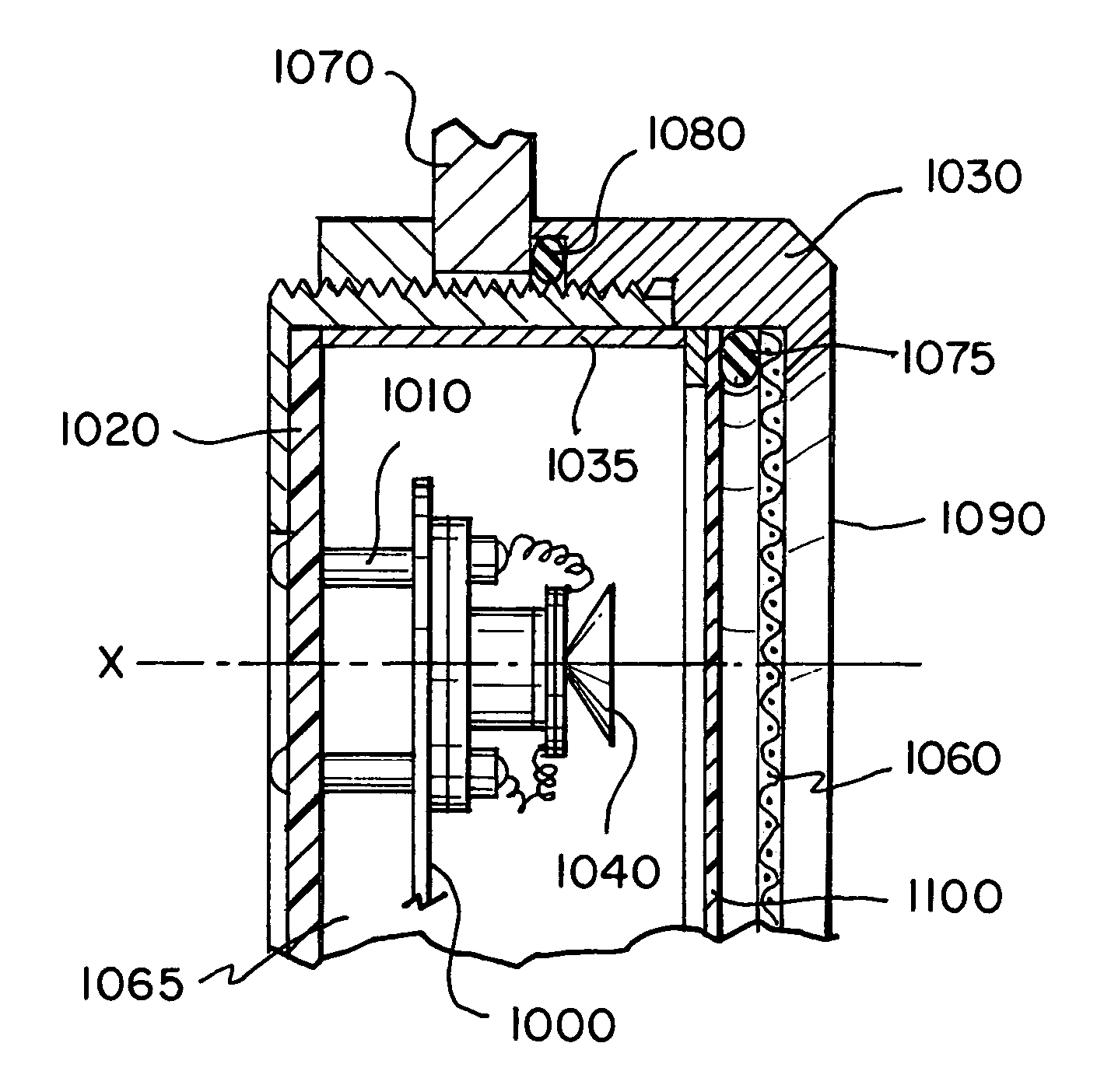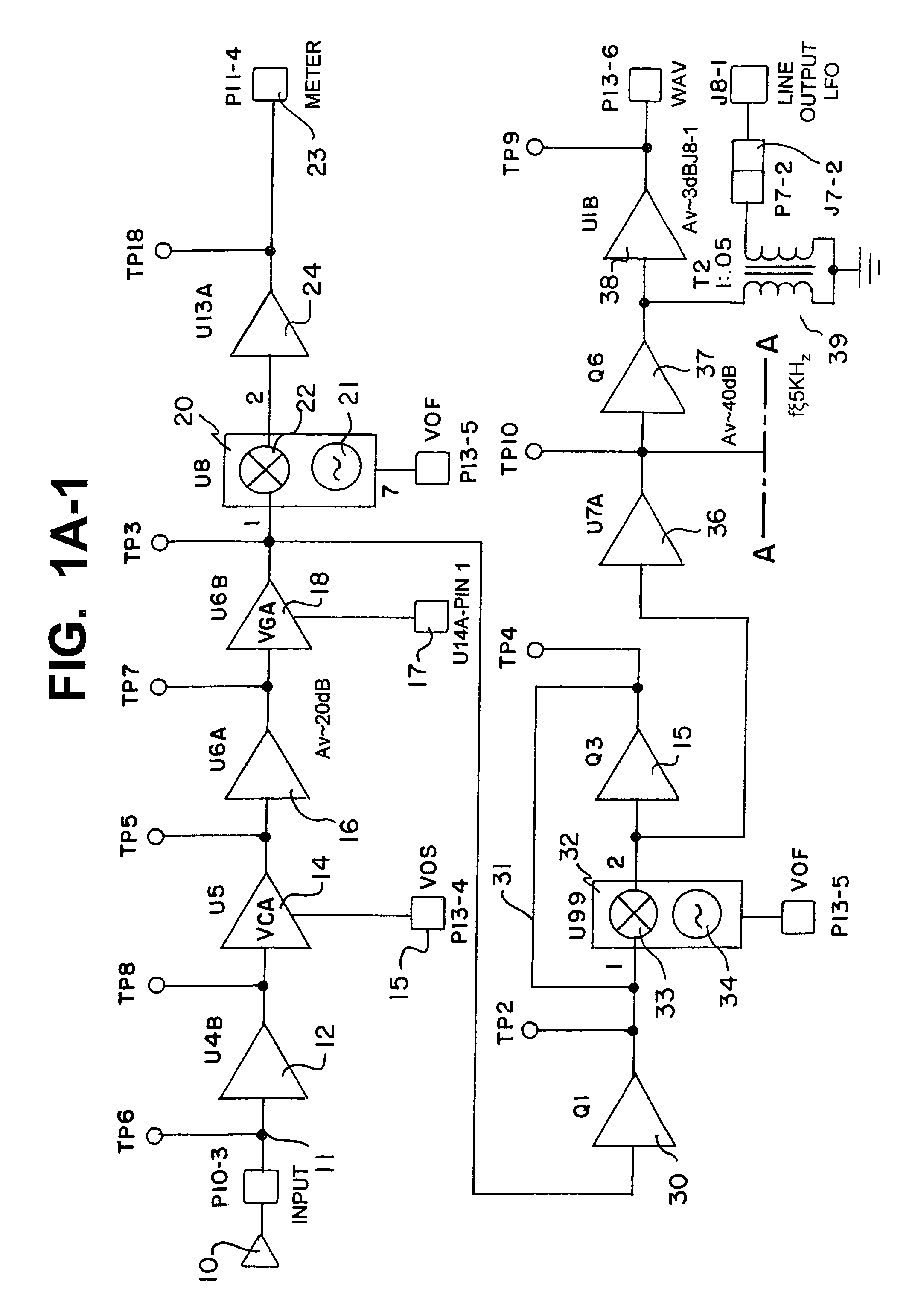Apparatus and method for minimizing reception nulls in heterodyned ultrasonic signals
a heterodyned ultrasonic and signal technology, applied in the field of ultrasonic generators, can solve the problems of generating a higher ultrasonic energy level, faulty devices such as bearings, and too high in frequency to be heard by a human, so as to reduce the number of reception nulls, wide sensing
- Summary
- Abstract
- Description
- Claims
- Application Information
AI Technical Summary
Benefits of technology
Problems solved by technology
Method used
Image
Examples
Embodiment Construction
[0042]FIG. 6 is a perspective view of a portable ultrasonic detector 600. Toward the front of the housing there are ultrasonic transducers 95, as shown in FIG. 8. Micro-processor controlled circuits for heterodyning the ultrasonic signal to shift its frequency to the audio range are contained in the body of the housing. A display 82 is located at the back so the operation and the results can be viewed. At the back, there is also a jack 88 for headphones, so that the user can listen to the audio sound during a test, e.g., as a way of locating a leak. Other jacks and controls are located on the body or will be described subsequently.
[0043]FIGS. 1A-1 and 1A-2 form an exemplary block diagram of the dual heterodyning circuit in accordance with the present invention which is located in the housing of the ultrasonic detector. In FIG. 1A-1, an input signal is applied from an ultrasonic transducer to a buffer amplifier 12 (U4B) at input 11 (P10). Typically, unity gain buffer 12 is used to ma...
PUM
| Property | Measurement | Unit |
|---|---|---|
| fixed angle | aaaaa | aaaaa |
| fixed angle | aaaaa | aaaaa |
| voltage | aaaaa | aaaaa |
Abstract
Description
Claims
Application Information
 Login to View More
Login to View More - R&D
- Intellectual Property
- Life Sciences
- Materials
- Tech Scout
- Unparalleled Data Quality
- Higher Quality Content
- 60% Fewer Hallucinations
Browse by: Latest US Patents, China's latest patents, Technical Efficacy Thesaurus, Application Domain, Technology Topic, Popular Technical Reports.
© 2025 PatSnap. All rights reserved.Legal|Privacy policy|Modern Slavery Act Transparency Statement|Sitemap|About US| Contact US: help@patsnap.com



